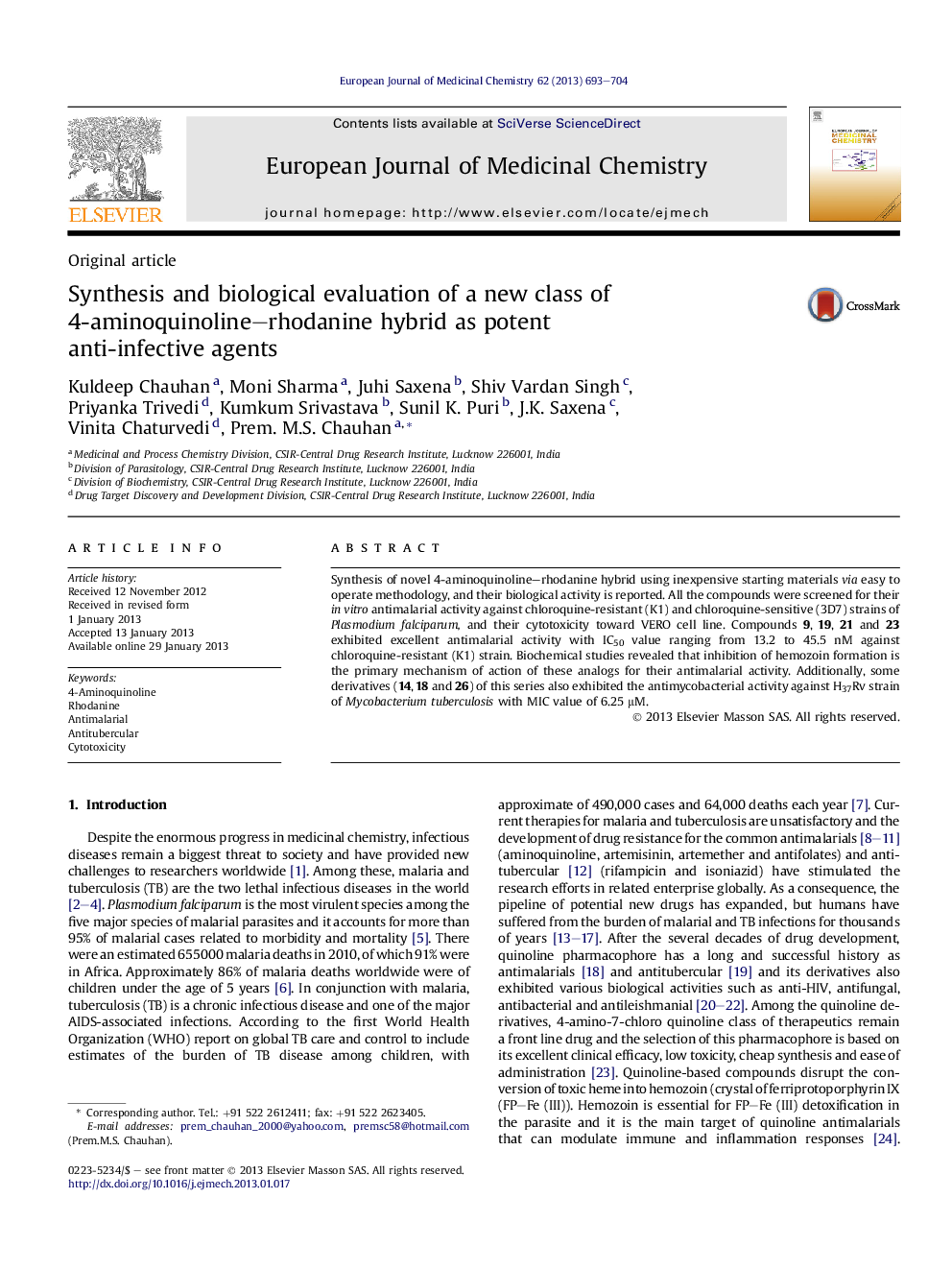| Article ID | Journal | Published Year | Pages | File Type |
|---|---|---|---|---|
| 1394339 | European Journal of Medicinal Chemistry | 2013 | 12 Pages |
Synthesis of novel 4-aminoquinoline–rhodanine hybrid using inexpensive starting materials via easy to operate methodology, and their biological activity is reported. All the compounds were screened for their in vitro antimalarial activity against chloroquine-resistant (K1) and chloroquine-sensitive (3D7) strains of Plasmodium falciparum, and their cytotoxicity toward VERO cell line. Compounds 9, 19, 21 and 23 exhibited excellent antimalarial activity with IC50 value ranging from 13.2 to 45.5 nM against chloroquine-resistant (K1) strain. Biochemical studies revealed that inhibition of hemozoin formation is the primary mechanism of action of these analogs for their antimalarial activity. Additionally, some derivatives (14, 18 and 26) of this series also exhibited the antimycobacterial activity against H37Rv strain of Mycobacterium tuberculosis with MIC value of 6.25 μM.
Graphical abstractA new series of 24 compounds of 4-aminoquinoline-rhodanine hybrids were synthesized. Among these, compound 23 (IC50 = 13.2 nM) was found to be most potent against chloroquine-resistant (K1) strain.Figure optionsDownload full-size imageDownload as PowerPoint slideHighlights► Synthesis of new 4-aminoquinoline-rhodanine hybrid as potent anti-infective agents. ► Four derivatives showed excellent IC50 (13.2–45.5 nM) against CQ-resistant strain. ► Most of the analogs inhibited hemozoin formation. ► Five compounds demonstrated moderate antitubercular activity.
